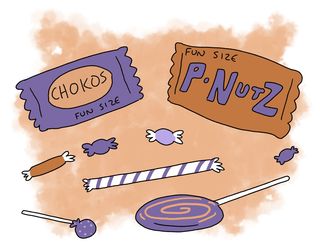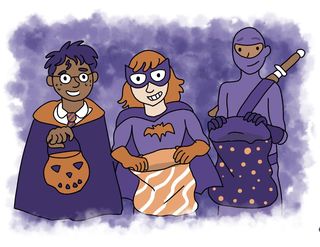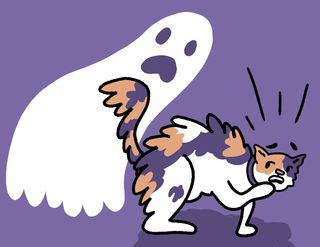Relationships
Candy, Costumes, and Scares, Oh My!
The psychology behind people's love of Halloween.
Posted October 21, 2017
According to the National Retail Federation, Americans love Halloween so much that almost 180 million Americans (72%) will celebrate Halloween in 2017. They are expected to spend a record $9 billion on costumes, decorations, greeting cards, and candy. Where do these Halloween attitudes come from? Why do Americans love Halloween so much?

Candy and Classical Conditioning
The association between Halloween and copious amounts of candy is undoubtedly behind the positive Halloween attitudes of many, due to classical (Pavlovian) conditioning. I know that as I child I was candy-deprived due to evil parents that restricted my access to candy treats as they muttered nonsense about candy not being good for you. But on Halloween, the parental guards briefly came down as my mother unleashed her children for a smorgasbord candy binge. It was kid heaven. And that’s not the only positive Halloween association. Many of us never forget the excitement of traipsing around in a costume on a crisp fall school night amid other child goblins taking free candy from strangers and returning home to inventory our haul. It’s a distinctive, magical and positive emotional social experience etched into memory. Halloween decorations and deliriously happy trick-or-treaters trigger those positive feelings even many years later.
Not everyone loves Halloween, though. Depending on personal experience or your culture, you may lack positive associations with the day. For example, some Christians associate it with the Devil, Satanism, and the occult, and think it potentially dangerous to invite children to play in the world of spirits and demons.

Costumes and the Lowering of Inhibitions
This year Americans will spend an estimated $3.4 billion transforming themselves into superheroes, witches, zombies, animals, and ghosts, among other things. Costumes can be freeing, leading to a lowering of inhibitions that lends to more fun. But under some conditions, Halloween costume parties and festivals fuel deviant behavior. My social psychology students nodded knowingly when I described the wild Halloween parties of my college days and explained that large groups, darkness, and costumes comprise a potent deindividuation cocktail. Normally, we are “individuated” in public situations, aware of ourselves as individuals and acting individually. But feeling excited and anonymous in an energized group “deindividuates” us by reducing self-awareness and increasing group-awareness. Deindividuated people act not as individuals, but as group members responsive to emerging group norms specific to that group in that situation. When those situational norms suggest that wild or deviant behavior is appropriate, people can behave in ways uncharacteristic for them. Costumes, especially those that lend to role-playing such as dressing as a character, likely contribute to deindividuation as they increase feelings of anonymity and we “become” someone else.

Fear Can Be Fun
Halloween is also a time where we have permission to play with the possibility of scary, dead, and monstrous things that defy the laws of nature. Sociologist Margee Kerr, a foremost expert on the Halloween scare, notes that fear can be fun when we know it’s not real and we ultimately feel safe. Under these conditions, we get a natural high from the hormones and neurotransmitters released when we are frightened, including dopamine, the same neurotransmitter that controls the pleasure centers of the brain. The initial scare stimulates the sympathetic nervous system and floods the body with these fight-or-flight chemicals but because we quickly label our arousal as arising from a fake threat we experience it as pleasurable. Of course if we’re too young to know that the scare isn’t real, it can make us hate those horror movies and haunted houses.
References
Diener, E. (1979). Deindividuation, self-awareness, and disinhibition. Journal of Personality and Social Psychology, 37, 1160-1171.
Kerr, M. (2015). Scream: Chilling adventures in the science of fear.
National Retail Federation 2017: Halloween spending to reach record 9.1 billion.
Prentice-Dunn, S., & Rogers, R.W. (1980). Effects of deindividuating situational cues and aggressive models on subjective deindividuation and aggression. Journal of Personality and Social Psychology, 39, 104-113.
Reicher, S., Spears, R., & Postmes, T. (1995). A social identity model of deindividuation phenomena. European Review of Social Psychology, 6, 161–198.
Zimbardo, P. G. (1969). The human choice: Individuation, reason, and order vs. deindividuation, impulse and chaos. In W. J. Arnold & D. Levine (Eds.), Nebraska symposium on motivation (Vol. 17, pp. 237–307). Lincoln, NE: University of Nebraska Press.


